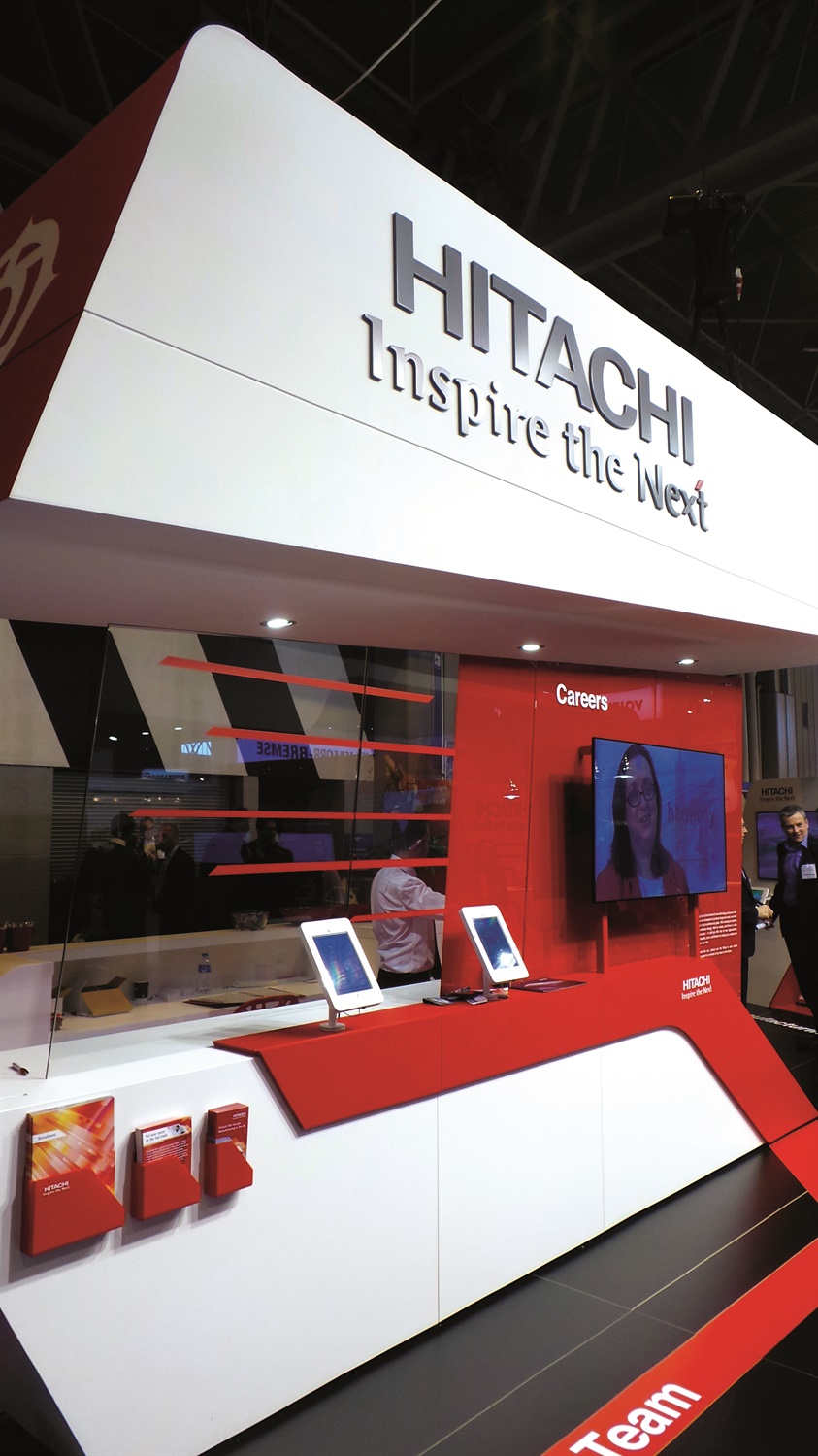01.07.15
The 'British Bullet Train'
Source: RTM Jun/Jul 15
Hitachi used Railtex 2015 to launch the interior concept for its latest generation of ‘very high speed’ vehicles, the AT400 range. RTM spoke to Hitachi Rail Europe’s Andy Barr at the show.
Hitachi has been working on its ‘AT Series’ of rolling stock since 2000, having already developed its AT100 (Metro), AT200 (Commuter) and AT300 (Intercity) platforms.
Having had recent UK successes with these platforms, including a contract for vehicles in the AT200 range for Abellio ScotRail and its ramping up of production on ‘Super Express’ AT300 trains for the Intercity Express Programme (IEP), it has recently been turning its attention to AT400.
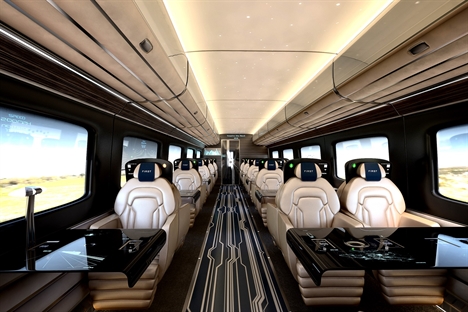
This class of ‘very high speed’ trains draws primary inspiration from the Japanese Shinkansen bullet trains, as did the Class 395 Javelin train before it to some extent, though that is now classed as part of its AT300 range. Hitachi was a “key player” in the development of the Shinkansen trains in Japan.
AT400
Talking about the AT400 platform, Andy Barr, chief operating officer of Hitachi Rail Europe, said: “This in effect completes our range. It means we’ve got trains all the way through the speed range, from shorter distance commuter trains through to high-speed trains for the UK and Europe.”
The speed ranges are 75-100mph for AT100 Metro trains, 100-125mph for AT200 Commuter trains, and 125-140mph for AT300 Intercity trains.
Hitachi hopes its new AT400 platform will be picked as the train of choice for HS2, which is expected to have running speeds up to 225-250mph.
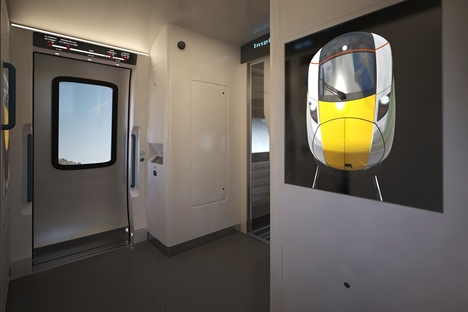
Visitors to Hitachi Rail Europe’s stand at Railtex 2015 in May in Birmingham were offered 3D glasses to see a virtualisation of its HS2 concepts.
Barr told us: “We’ve already got interiors that we’ve developed in conjunction with stakeholders, on our other trains. Our thoughts are turning to what happens next. Whatever happens in the high-speed world, the trains that are going to be running will be in service in a few years’ time, so we need to think about what people want.
“It’s about things like e-ticketing, so rather than queueing up to buy a paper ticket you get on the train – everyone has a smartphone or tablet these days – which has a wi-fi network on board, you join the network and be part of the travel experience. That’s a two-way process, which means that customers can get travel information about their journey, and information about the next stage of their journey. Going to London for example, you might want to know what’s happening on the Underground.
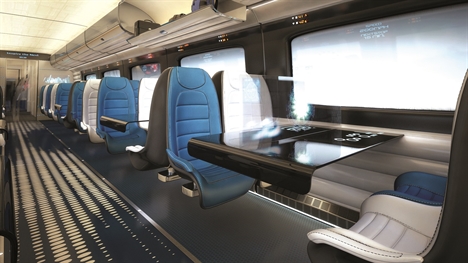
“We did take it a bit further, so you’ll see in the concept imagery that there’s real-time information on the windows, and we’ve also got a concept that shows you a holographic projection of some journey information as well. In essence, it’s really saying that people can be more part of the journey, rather than just getting on the train and getting off it. It’s also about using the downtime when sitting there – it can be time to think, or productive time, and we need to think about what the train has on board as a tool to deliver that.
“The interior is part of the journey experience. The train itself does the things it needs to do and runs at the speed it needs to run to get the journey time – but actually, that’s what people expect. The next bit is the environment they’re in. Think about the competition from the airlines, with the different interiors. With a plane, you’re normally cramped into a small area, with a train you can just work, but in a different environment.”
Specification
He said he hoped to be able to work with the Department for Transport on the requirements and specification of the HS2 trains, to avoid it being overly prescriptive and allow some “free thinking” and creativity in the design.
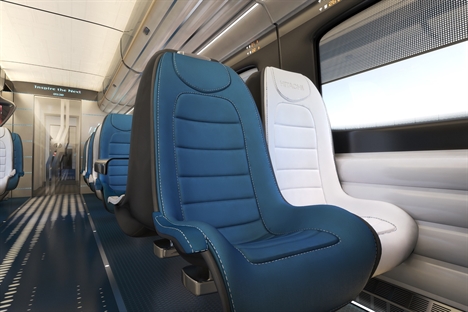
He added that the features of the IEP trains are already based on passenger group feedback and input from train operators and the DfT, saying it’s a great “base to build on” and: “We have lots of technology partners around the industry with some great ideas. We want to marry ‘high concept’ with ‘deliverable’.”
“We’ll have been running our IEP trains by then too so will have experiences from them,” he added.
He said that while Hitachi has expanded its range across all types of rolling stock, its true pedigree and world-leading expertise is in the highest speed trains.
These videos give a flavour of the interior and exterior of the concept train:
UK focus
Hitachi’s Newton Aycliffe manufacturing facility, opening later this year, is also going to be the design office for Hitachi Rail Europe, itself headquartered in London. Barr was keen to stress how important the UK is to the company.
He said: “Railtex is a really important show to us; you can see from our stand that we put emphasis on it. The UK industry is exceptionally important to us, from our first Javelin trains 10 years ago, to today.
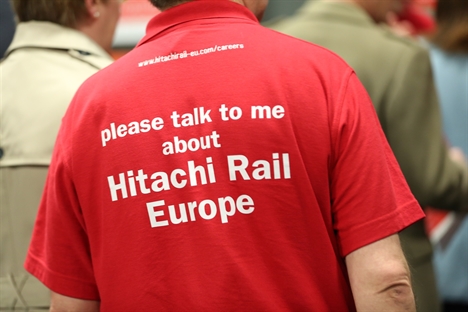
“That’s just the start for us, because we’re moving across and looking at what Europe can offer us, because we think we’ve got a lot to bring. We’re working with Deutsche Bahn in particular, we have a great partnership there, and also in Scandinavia. There is now the possibility to export from Newton Aycliffe, which would be a great story to tell.”
Barr noted that Hitachi’s Railtex stand was also being used to demonstrate its CBTC (communications-based train control) signalling system. “We do traffic management too – if you put that all together, we’re a total system provider.”
Keith Jordan, managing director of Hitachi Rail Europe, spoke at Railtex himself on taking a ‘whole-systems approach to railway engineering’ (more here).
Barr added: “The high speed project of the future would need that, and we believe that if you went to one supplier for everything, then that really does bring a benefit. You can have a really closely matched infrastructure with the rolling stock.
“With HS2, there’s a possibility of having [some] trains that only run on the high speed line, but also some that go off and run on the conventional network. That’s exactly what the Javelin does and has been doing for seven years. That experience has been invaluable, and we think we’re the only people who have got that experience.”
RTM also discussed the AT200 order for Scotland. The final design review is now done, with production starting towards the end of this summer. Testing will begin in spring 2016, Barr said.
Following the Class 800 tests at Old Dalby and then on the East Coast Main Line at full speed (in protected zones), Barr said: “It’s a very exciting year for us, people are joining all the time so it’s quite a dynamic place to be.”
